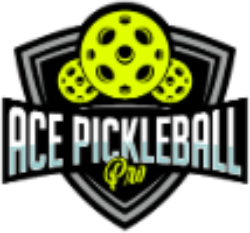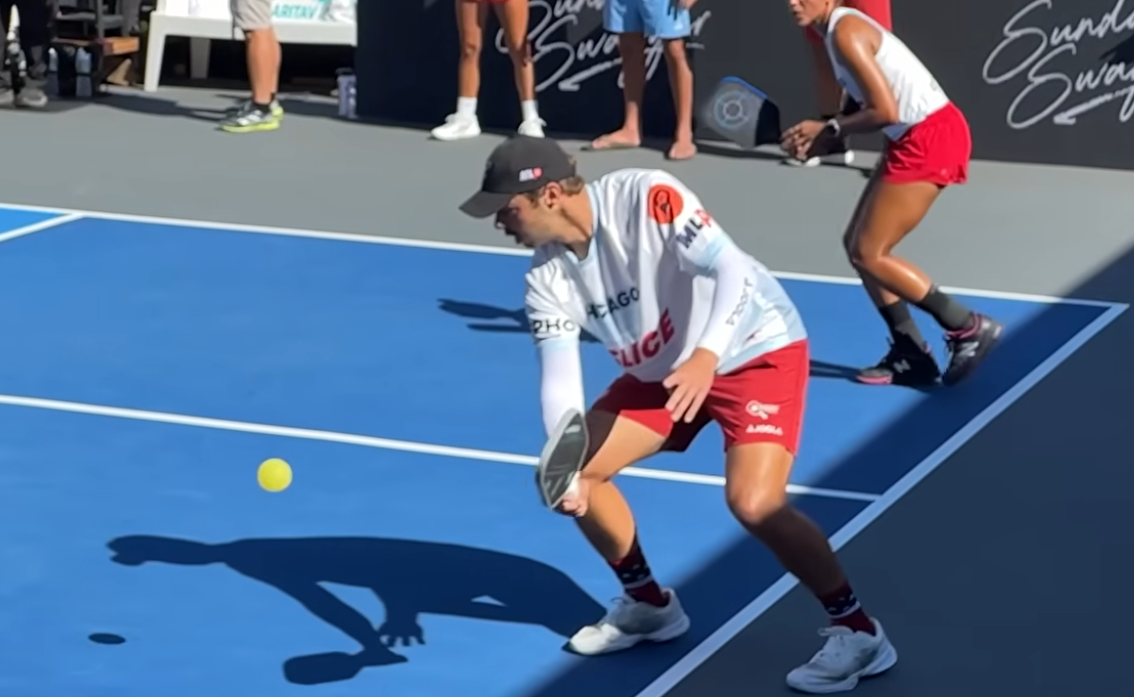The Third Shot Drop: Pickleball’s Transitional Power Move for the 2025+ Player
“The drop shot isn’t passive—it’s preemptive. It’s the chess opening to your mid-game dominance.”
Why the Third Shot Drop is More Than Just a Technique
When you serve, you’re starting from the baseline disadvantage. Your opponents? Camped at the net, fangs out. The third shot drop is your bridge—your Trojan Horse to level the court.
It’s not just about slowing the game—it’s about shifting into the Transitional Power Zone (TPZ):
That tiny 2-second window post-drop where your team charges toward the net as your opponents scramble to reset.
When executed right, this moment gives you:
- Positional equity: You earn that forward ground.
- Mental edge: You set the pace.
- Tactical setup: Opens up dinks, pressure angles, and kitchen dominance.
👉 Want to play smarter at the net? Brush up on pickleball kitchen rules—your footwork is your first form of discipline.
From Execution to Intent: Thinking Like a Pro
Most players obsess over the how.
“How do I hit a good third shot drop?”
But pros? They ask:
“What does this drop enable me to do three shots later?”
The difference is intention.
The third shot drop isn’t the climax—it’s the opening chord. Like a jazz solo, the first note sets the tone. The mastery lies in how you develop the rest of the rally.
Drop, Drive, or Disrupt? Your Decision Matrix
Instead of defaulting to a drop every time, elite players scan for variables.
Here’s a quick decision grid modeled after AI match simulations:
| Game Variable | Best Shot Option |
|---|---|
| Return is fast & deep | Drop or lob |
| Return is high & shallow | Drive or speed-up |
| Opponents at net | Drop, slice, or angle shot |
| Opponents are retreating | Roll drive or push drop |
This logic mirrors drone strike software—trajectory isn’t based on conditions alone, but on movement vectors.
Curious how to add disguise to your drops? Check out how to return a spin ball in pickleball—you’ll see why unpredictability is power.
Strategic Philosophy: The Neuroscience of Dropping Under Pressure
Ever wonder why some players make the drop look effortless?
It’s not calm—they’ve just neurologically offloaded the complexity.
- Prefrontal Cortex Activation: Strategic restraint beats raw aggression.
- Cognitive Load Management: Ritualized drops conserve decision energy.
- Procedural Memory Reinforcement: Great drops live in your cerebellum, not your conscious mind.
Want to build that kind of automatic IQ? Start with pickleball drills for beginners that tie muscle memory to decision-making.
Pro Tips (Whispers from the Court Gods)
- Court Whisperer Tip: Drop to the backhand. Not because it’s fancy—because no one wants to bend low twice.
- Mental Glitch Hack: Bounce the ball twice before serving to calm nervous energy. Forces your rhythm.
- Kitchen Camo Tip: When you drop, look like you’re about to drive. Shoulder cues trick visual players.
- Equipment Edge: Want drops that dip cleaner? Here’s how to choose the best pickleball paddle for control.
Future-Facing Drop Concepts (2025+)
1. Biometric Drop Calibration
With tools like Pickleball IQ and Whoop integrations, drops will soon be tuned by wrist angle, fatigue, and success metrics in real time.
2. Dynamic Paddle Technology
Sensor-enhanced paddles will highlight “green zones” based on your past successes. Want to stay ahead? Here’s what makes a good pickleball paddle.
3. Neurological Pattern Mapping
Think LED-reactive floors, baseball pitch-style pattern training, and drills that mimic match-speed drop decisions.
4. Hybrid Drop Tech
Players like Ben Johns and Anna Leigh Waters are already integrating drive-speed topspin with drop-depth fade—a shot that bluffs power and drops dead.
5. Game Theory-Optimized Shot Selection
Using AI to model fatigue + opponent patterns will soon help pros choose drop vs. drive based on statistical rally outcomes.
If you’re curious about paddle design and want to future-proof your gear, don’t miss the top pickleball paddles for spin.
The DROP Protocol (Install This Mindset)
“Don’t train the drop in isolation. Train the mindset that surrounds it.”
D = Decide based on real-time variables
R = Reframe drop as a tempo-control weapon
O = Observe opponent’s post-drop response
P = Plan the next two moves, not just the shot
This is the mental firmware pros install—so they act ahead, not in reaction.
Drill Ladder: Interpolation Meets Imagination
Level up your drop using this creative progression:
| Drill Name | Core Focus | Dopamine Boost Add-On |
|---|---|---|
| Target Triad | Placement under pressure | Add bounce sensor to track entry angle |
| Visual Distractor | Drops with strobe lighting | Trains under sensory overload |
| AI Return Adapt | Partner feeds random returns | Use app to rate drop success % |
| Drop & Collapse | Drop + advance timing | Trigger movement on paddle impact |
These are the drills that evolve your drop from “safe shot” to “court-seizing catalyst.”
If you’re practicing alone, here’s how to practice pickleball against a wall—a great setup for simulating drop-and-advance drills solo.
Final Takeaway: You’re Not Just Dropping—You’re Programming the Point
The drop isn’t passive.
It’s a strategic software patch that updates your tempo, positioning, and pressure—before your opponents realize you’ve shifted the game.
In the future of pickleball, it’s not just who hits the hardest—it’s who thinks three moves ahead.
So don’t just drop. Drop like a future champion.

